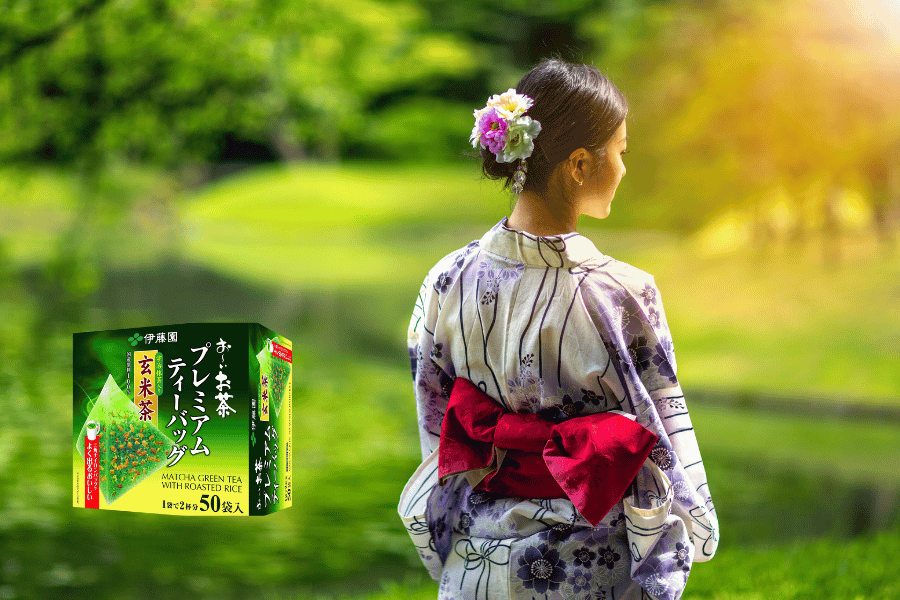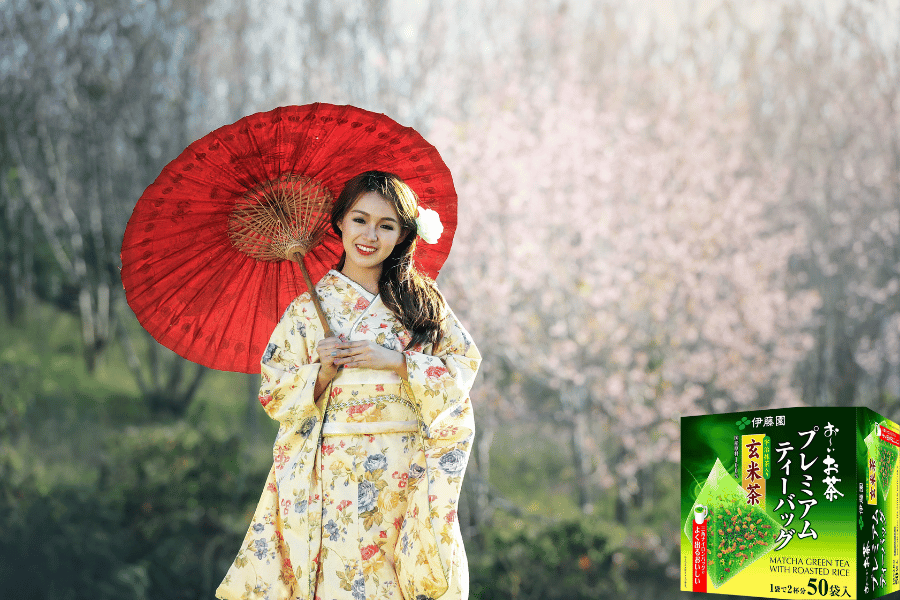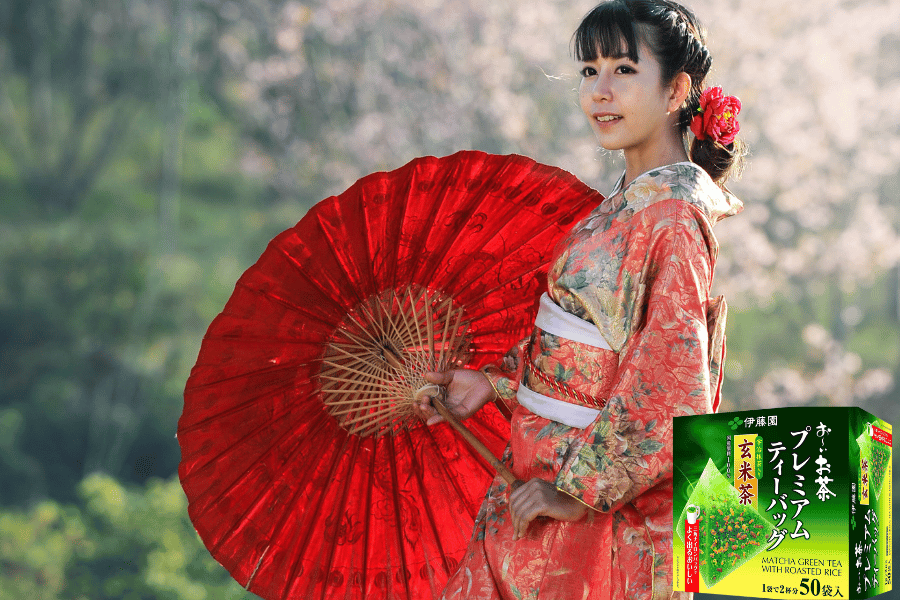As the cold winter months settle in, maintaining a healthy lifestyle and managing one’s weight can become a daunting task. However, it’s during this season that we can turn to the comforting and rejuvenating embrace of Japanese green tea to support our wellness goals.
The Importance of Winter Wellness Winter often brings challenges to our physical and mental well-being. The combination of colder weather, reduced daylight, and holiday feasts can lead to weight gain and a decline in overall health. To combat these challenges, it’s crucial to focus on winter wellness, a holistic approach to staying healthy and fit during the chilly season.
Japanese Green Tea: A Winter Ally for Weight Loss In this guide, we’ll explore the remarkable world of Japanese green tea and its potential as a powerful tool for weight management during winter. Japanese green tea is not just a beverage; it’s a centuries-old tradition rich in culture and history. Beyond its cultural significance, it offers a range of health benefits, making it an ideal companion on your journey to a healthier winter.
In the following sections, we’ll delve into the different types of Japanese green tea, their benefits for weight loss, how to choose the best quality tea, and the art of brewing and enjoying it. Along the way, we’ll provide expert insights and answers to frequently asked questions to ensure you have all the information you need to embrace Japanese green tea as part of your winter wellness routine.

Exploring Japanese Green Tea
The Rich History and Cultural Significance of Japanese Green Tea Japanese green tea, known as “ocha” or “ryokucha,” holds a special place in Japanese culture and history. It has been cultivated and enjoyed for centuries, and its traditions continue to thrive today. Here are some key points to consider:
- Ancient Origins: The cultivation of tea in Japan dates back to the 8th century when Buddhist monks brought tea plants from China. Over time, Japanese tea culture developed distinct characteristics and rituals.
- Cultural Ceremonies: The Japanese tea ceremony, known as “chanoyu” or “sado,” is a centuries-old tradition that emphasizes the preparation, presentation, and consumption of matcha, a powdered green tea. It embodies principles of harmony, respect, purity, and tranquility.
Types of Japanese Green Tea Japanese green tea comes in various forms, each with its unique flavor profile and preparation method. Some of the most popular types include:
- Matcha: A finely ground powdered green tea, matcha is vibrant green and known for its rich, umami flavor. It’s traditionally used in the Japanese tea ceremony.
- Sencha: This is the most common type of Japanese green tea and is often enjoyed in households. It has a refreshing, grassy taste and is brewed from whole tea leaves.
- Genmaicha: A unique blend of green tea and roasted brown rice, genmaicha has a nutty and slightly savory flavor. It’s a cozy and comforting choice, perfect for the winter months.
- Hojicha: Hojicha is roasted green tea, resulting in a reddish-brown color and a toasty, caramel-like flavor. It’s low in caffeine and easy on the palate.
Exploring these various types of Japanese green tea allows you to choose the one that suits your taste preferences and weight loss goals.

Benefits of Japanese Green Tea for Weight Loss
Harnessing the Power of Catechins and Antioxidants
Japanese green tea is renowned for its potential to support weight loss, and its secret lies in its unique composition of bioactive compounds. Here’s how these components can benefit your weight management journey:
1. Catechins: The Fat-Fighting Heroes
- Epigallocatechin Gallate (EGCG): EGCG is a type of catechin found abundantly in green tea. It’s known for its role in increasing metabolism and promoting fat oxidation. This means it can help your body burn fat more efficiently, making it a valuable ally in your quest to shed winter pounds.
- Thermogenesis: Catechins, particularly EGCG, have been shown to boost thermogenesis—the process by which your body generates heat and burns calories. This can lead to increased calorie expenditure, even at rest.
2. Antioxidants: Protecting Your Health
- Polyphenols: Green tea is packed with polyphenols, which are powerful antioxidants. These compounds help combat oxidative stress and inflammation in the body. By reducing inflammation, green tea can potentially support better weight management.
- Improved Fat Oxidation: Antioxidants like those found in green tea can enhance the body’s ability to burn fat as fuel. This means that your workouts may become more effective in targeting stored fat.
3. Calorie-Free Hydration
- Unlike sugary beverages or calorie-laden options, green tea is a calorie-free choice. Staying hydrated is essential for overall health and can help control your appetite, making green tea an ideal winter beverage.
4. Supporting Gut Health
- Some studies suggest that the polyphenols in green tea may support a healthy gut microbiome. A balanced gut can play a role in weight regulation.
5. Stress Reduction
- The act of sipping a warm cup of Japanese green tea can be soothing and help reduce stress. Lower stress levels can, in turn, contribute to healthier eating habits and better weight management.
Incorporating Japanese green tea into your daily routine during the winter months can provide you with these potential weight loss benefits. However, it’s essential to combine green tea consumption with a balanced diet and regular physical activity for the best results.
Choosing the Best Japanese Green Tea
Selecting High-Quality Tea for Your Weight Loss Journey
Choosing the right Japanese green tea is essential to ensure you reap the maximum benefits for weight loss. Here are some factors to consider when making your selection:
1. Tea Grade Matters
- Japanese green tea is categorized into different grades based on the quality of the leaves. The highest grade is “gyokuro,” followed by “sencha” and “bancha.” Gyokuro is the most prized and tends to be sweeter and more delicate, while sencha is a popular choice for everyday consumption. Choose a grade that suits your taste preferences and budget.
2. Freshness Is Key
- Green tea is at its best when it’s fresh. Look for teas with recent harvest dates or packaging that indicates freshness. Fresher tea typically has a more vibrant flavor and retains its beneficial compounds.
3. Sourcing and Origin
- Pay attention to where the tea is sourced from. Different regions in Japan produce green teas with distinct flavors. For example, Uji tea is famous for its high-quality matcha, while Shizuoka is known for its sencha. Research the origin and reputation of the tea to ensure quality.
4. Loose Leaf vs. Tea Bags
- Loose leaf green tea often offers superior quality compared to tea bags. Whole leaves have more flavor and aroma. However, tea bags can be more convenient for daily use. Choose the format that aligns with your preferences.
5. Organic and Pesticide-Free Options
- If you prioritize organic and pesticide-free teas, look for certifications on the packaging. Organic green tea ensures that your tea leaves were grown without synthetic pesticides or chemicals.
6. Read Customer Reviews
- Before making a purchase, read customer reviews and ratings online. Real experiences from other tea enthusiasts can provide valuable insights into the quality and flavor of the tea.
Remember that the best Japanese green tea for weight loss is one that you enjoy drinking regularly. Experiment with different types and grades to find the one that suits your palate and supports your winter wellness goals.

Preparing and Enjoying Japanese Green Tea
Unlocking the Delight of Japanese Green Tea for Weight Loss
To make the most of Japanese green tea’s weight loss benefits, it’s essential to know how to prepare and enjoy it correctly. Here’s a step-by-step guide:
1. Choosing the Right Teapot or Teacup
- Traditional Japanese teapots, such as a kyusu, are designed for brewing green tea. However, any teapot or teacup will suffice. Opt for one that you find aesthetically pleasing and comfortable to use.
2. Using Fresh, Pure Water
- Start with fresh, cold water. Avoid using water that has been sitting or has been reheated, as it may affect the flavor of your tea. Spring water or filtered water is ideal.
3. Temperature Control
- Japanese green tea is delicate and should not be brewed with boiling water. The recommended water temperature for most green teas is around 175°F (80°C). You can achieve this by allowing the water to cool slightly after boiling.
4. Measuring the Tea
- The amount of tea leaves you use depends on personal preference and the type of tea. As a general guideline, use about 1 to 1.5 teaspoons of loose leaf tea per 8-ounce cup. Adjust to taste.
5. Brewing Time
- Steep the tea for about 1 to 2 minutes. Oversteeping can lead to bitterness, so be mindful of the time. Green tea typically requires shorter steeping times compared to other teas.
6. Enjoying the Aroma
- As you pour the tea into your cup, take a moment to appreciate its aroma. Japanese green tea offers a delightful range of scents, from grassy and vegetal to sweet and floral.
7. Sipping Mindfully
- Japanese green tea is best enjoyed sip by sip. Take small sips and savor the flavors. You may notice a balance of sweetness, bitterness, and umami.
8. Rebrewing
- Many high-quality Japanese green teas can be rebrewed multiple times. Experiment with longer steeping times for subsequent infusions, as the leaves have already expanded.
Incorporate green tea into your daily routine during the winter months. Whether you prefer the boldness of matcha, the freshness of sencha, or the nuttiness of genmaicha, each cup brings you one step closer to your weight loss and winter wellness goals.
Conclusion
Embracing Japanese Green Tea for Your Winter Wellness and Weight Loss Journey
In the heart of winter, when the world is blanketed in snow and the chill is in the air, there’s a warm and comforting ally you can turn to in your pursuit of wellness and weight loss—Japanese green tea. This ancient tradition, steeped in culture and history, offers a multitude of benefits for those seeking a healthier and slimmer season.
A Recap of the Journey Throughout this guide, we’ve explored the world of Japanese green tea, from its rich history and cultural significance to the diverse types of tea available. We’ve uncovered the remarkable benefits of green tea for weight loss, thanks to its potent catechins and antioxidants. You’ve learned how to choose the best Japanese green tea for your needs, and we’ve guided you through the art of brewing and enjoying it.
A Winter Wellness Companion Japanese green tea is more than just a beverage; it’s a pathway to winter wellness. It supports your weight management goals, hydrates your body without adding extra calories, and even offers stress-reduction benefits. As you sip your favorite variety of Japanese green tea, you’ll find yourself on a journey to a healthier and slimmer you.
Your Winter Wellness Starts Here As you embark on your winter wellness journey, remember that Japanese green tea is a valuable tool, but it’s most effective when combined with a balanced diet and regular physical activity. Listen to your body, practice mindfulness, and enjoy the simple pleasure of a warm cup of green tea.
Final Thoughts This snowy season, let the gentle flavors and powerful benefits of Japanese green tea be your guide. Whether you’re sipping matcha, sencha, or genmaicha, each cup brings you closer to your winter wellness and weight loss goals.With this, we conclude the article on “Winter Wellness Guide: Best Japanese Green Tea for Weight Loss.” We hope that you find this guide informative and inspiring as you embark on your journey towards winter wellness and weight management.
Frequently Asked Questions (FAQs)
Common Queries About Using Japanese Green Tea for Weight Loss
Here, we’ll address some of the frequently asked questions related to incorporating Japanese green tea into your weight loss journey:
1. How much Japanese green tea should I drink for weight loss?
- The optimal amount of green tea varies from person to person. A general guideline is to consume 2-3 cups per day. However, it’s essential to listen to your body and avoid excessive consumption, as too much caffeine can have adverse effects.
2. Are there any potential side effects of consuming green tea?
- Green tea is generally safe for most people when consumed in moderation. However, it does contain caffeine, which can lead to side effects like insomnia, jitteriness, and increased heart rate in sensitive individuals. If you experience any adverse effects, consider reducing your intake.
3. Can I add sweeteners or flavorings to my green tea for weight loss?
- Adding sweeteners or flavorings like honey or lemon is a matter of personal preference. While these additions can enhance the taste, be mindful of their calorie content, as it may counteract the calorie-free nature of green tea. Opt for natural sweeteners if needed.
4. Is it safe to consume green tea during pregnancy or while breastfeeding?
- While green tea is generally safe, it’s advisable for pregnant and breastfeeding women to limit their caffeine intake. Excessive caffeine can affect fetal development and pass into breast milk. Consult with a healthcare provider for personalized advice.
These FAQs aim to provide clarity on common concerns related to consuming Japanese green tea for weight loss. If you have any additional questions or require further information, please feel free to ask.
Related Posts :
- En Health Benefits Of Green Tea Pills For Weight Loss 6uxj
- En Active Keto Capsules Review Is This The Secret To International Social Success Y5m7
- En Postpartum Women In The Usa Share Cinnamon Pills Weight Loss Reviews Nz61
- En Profast Ketoacv Gummies S842
- En 2023s Most Effective Keto Acv Gummies In The Usa H03m